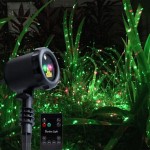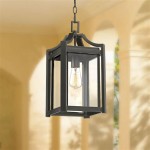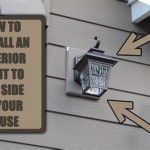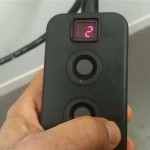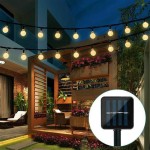Outdoor Garden Solar Lights Circuit: Essential Aspects
Solar lights have become increasingly popular for outdoor garden lighting due to their energy efficiency, cost-effectiveness, and ease of installation. Understanding the essential aspects of an outdoor garden solar lights circuit is crucial to ensure optimal performance and longevity.
Components of a Solar Lights Circuit
A typical solar lights circuit consists of the following components:
- Solar panel: Converts sunlight into electrical energy.
- Battery: Stores the electrical energy generated by the solar panel.
- Charge controller: Regulates the flow of electricity to and from the battery, preventing overcharging and deep discharging.
- Light-emitting diodes (LEDs): Produce light using electrical energy.
Working Principle
During the day, the solar panel converts sunlight into electrical energy and charges the battery. At night, when the ambient light level drops, the charge controller detects the low light and activates the LEDs, illuminating the surroundings. The stored electrical energy in the battery powers the LEDs until sunrise or until the battery is depleted.
Factors Affecting Circuit Performance
Several factors can impact the performance of an outdoor garden solar lights circuit, including:
- Solar panel size: Larger panels generate more electricity, extending the illumination duration.
- Battery capacity: Higher-capacity batteries store more energy, providing longer illumination times.
- LED efficiency: More efficient LEDs consume less energy, resulting in longer illumination durations.
- Sunlight exposure: The amount of sunlight available affects the energy generated by the solar panel.
Circuit Considerations
Proper circuit design is essential to optimize performance and prevent damage. Here are some considerations:
- Voltage matching: The voltage output of the solar panel should match the voltage requirements of the LEDs and battery.
- Current rating: The charge controller should have a current rating higher than the maximum current drawn by the LEDs.
- Battery protection: Overcharging and deep discharging can damage the battery. Choose a charge controller with built-in protection features.
- External factors: Consider the environmental conditions, such as temperature, moisture, and vibration, when selecting components.
Troubleshooting Common Issues
If your outdoor garden solar lights are not functioning properly, consider the following troubleshooting steps:
- Check the solar panel: Ensure it is clean and receiving adequate sunlight.
- Test the battery: Replace the battery if it is weak or damaged.
- Examine the charge controller: Verify that it is operating correctly and not damaged.
- Inspect the LEDs: Check for any loose connections or burnt-out LEDs.
Conclusion
Understanding the essential aspects of an outdoor garden solar lights circuit is essential for selecting and installing an efficient and long-lasting lighting system. By considering the components, working principle, factors affecting performance, and circuit considerations, you can ensure optimal functionality and enhance the visual appeal of your outdoor space at night.

Outdoor Garden Led Solar Light Circuit

Solar Garden Lights Circuit Gadgetronicx

Garden Solar Light Detailed Circuit Diagram Available

Simple Solar Garden Light Circuit With Automatic Cut Off Homemade Projects

How To Build A Simple Solar Powered Automatic Garden Light Circuit

Simple Solar Garden Light Circuit With Automatic Cut Off Homemade Projects

Outdoor Solar Lights Circuits Eleccircuit Com

Automatic Solar Garden Light Circuit Schematic Lights Outdoor

Automatic Solar Garden Light

Automatic Solar Garden Lights With Leds
Related Posts


